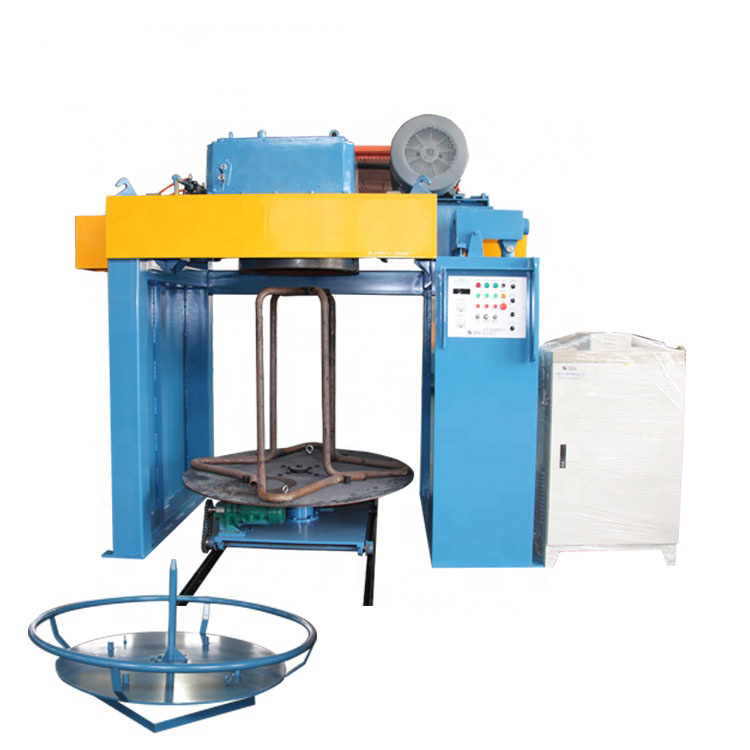How To Choose The Right Thermal Spraying Wire For Your Project
Thermal spraying is a versatile and effective method for applying coatings to various surfaces. It involves melting a material, usually in the form of wire, and spraying it onto a substrate to create a protective or decorative coating. The choice of thermal spraying wire is crucial to the success of the project, as different wires have different properties that can affect the quality and performance of the coating.
When selecting a Aluminum Alloy Wire machine, there are several factors to consider. The first consideration is the material of the wire. Different materials have different properties, such as hardness, corrosion resistance, and thermal conductivity. It is important to choose a wire material that is compatible with the substrate and the intended application of the coating. Common materials used for thermal spraying wires include stainless steel, aluminum, and nickel alloys.

Another important factor to consider is the wire diameter. The diameter of the wire will affect the thickness of the coating and the deposition rate. Thicker wires are typically used for thicker coatings and higher deposition rates, while thinner wires are used for finer coatings and lower deposition rates. It is important to choose a wire diameter that is suitable for the desired coating thickness and deposition rate.
The shape of the wire is also an important consideration. Thermal spraying wires come in various shapes, such as round, flat, and cored wires. The shape of the wire can affect the stability of the arc, the uniformity of the coating, and the efficiency of the spraying process. It is important to choose a wire shape that is compatible with the spraying equipment and the desired coating properties.
In addition to material, diameter, and shape, the surface finish of the wire is also important. The surface finish can affect the adhesion of the coating, the porosity of the coating, and the overall quality of the coating. It is important to choose a wire with a clean and smooth surface finish to ensure a high-quality coating.
When selecting a thermal spraying wire, it is also important to consider the manufacturer of the wire. Different manufacturers produce wires with different quality standards and specifications. It is important to choose a reputable manufacturer that produces high-quality wires that meet the requirements of the project.
In conclusion, choosing the right thermal spraying wire is crucial to the success of a thermal spraying project. By considering factors such as material, diameter, shape, surface finish, and manufacturer, you can ensure that you select a wire that is compatible with the substrate and the intended application of the coating. With the right thermal spraying wire, you can achieve a high-quality coating that meets your project requirements.
Common Challenges And Solutions In Thermal Spraying Wire Applications
LLT-17/400 Aluminum Wire Breakdown Drawing Machine is a versatile and effective method for applying coatings to various surfaces in industries such as aerospace, automotive, and manufacturing. However, like any process, there are common challenges that can arise when using thermal spraying wire. In this article, we will explore some of these challenges and provide solutions to help overcome them.
One of the most common challenges in thermal spraying wire applications is poor adhesion of the coating to the substrate. This can result in a weak bond between the coating and the surface, leading to premature failure of the coating. To address this issue, it is important to properly prepare the substrate before applying the coating. This can involve cleaning the surface to remove any contaminants, roughening the surface to improve adhesion, and applying a bonding agent to promote adhesion.
Another challenge that can arise in thermal spraying wire applications is porosity in the coating. Porosity can weaken the coating and make it more susceptible to corrosion and other forms of degradation. To reduce porosity in the coating, it is important to use the correct spraying parameters, such as spray distance, spray angle, and spray speed. Additionally, using high-quality wire and ensuring proper wire feed can help minimize porosity in the coating.

In some cases, thermal spraying wire applications may result in uneven coating thickness. This can be caused by factors such as improper spraying technique, inconsistent wire feed, or variations in substrate temperature. To achieve a uniform coating thickness, it is important to maintain consistent spraying parameters throughout the application process. This can involve adjusting the wire feed rate, optimizing the spraying distance, and monitoring the substrate temperature to ensure uniform heating.
Another common challenge in thermal spraying wire applications is the formation of cracks in the coating. Cracks can compromise the integrity of the coating and allow moisture and other contaminants to penetrate the surface, leading to corrosion and other forms of damage. To prevent the formation of cracks, it is important to use the correct wire material and ensure proper bonding between the coating and the substrate. Additionally, controlling the cooling rate of the coating can help minimize the risk of cracking.
In conclusion, thermal spraying wire is a valuable technique for applying coatings to various surfaces in industrial applications. However, like any process, there are common challenges that can arise when using thermal spraying wire. By understanding these challenges and implementing the appropriate solutions, it is possible to achieve high-quality coatings that are durable and long-lasting. Proper substrate preparation, controlling porosity, achieving uniform coating thickness, and preventing cracks are key factors in overcoming these challenges and ensuring the success of thermal spraying wire applications.






